

A two-decade veteran in the TMT sector, hands-on CEO, and former Management Consulting Partner. I have leadership experience in large, multi-billion-dollar organizations and start-ups operating in major markets in the Americas, Europe, Australia, and Asia. In 2020, I was recognized by CEO Today magazine as the "Master of the Pivot" and by CIO Bulletin as "Top 10 CEOs to Watch".
My expertise includes strategy development, M&A, general management, business model transformation, rapid pivots, scale-up, ecosystem creation, go-to-market, and P&L management ($2b). I have built and scaled 5 businesses throughout my career.
Currently CEO of Ligl, responsible for all aspects of the business. Ligl is a category-defining product propelling end-to-end impact on Legal Operations.
As a Fellow of the Aspen Institute, I focus on the future of cities solving issues around autonomous driving and VTOL.
My consulting career with firms like Deloitte, PwC and FTI focused on helping CEOs, Boards, PE investors, and business leaders transform businesses for growth; Led and created value from >1000 M&A transactions; commercial, operational, technical due diligence, 75 M&A Integrations, 25 Divestitures (spin-offs/carve-outs). I pioneered many new approaches in M&A, authored numerous articles, won many innovation awards, and continue contributions through my articles. I have held large P/Ls during consulting and I still mentor people on becoming a Partner and succeeding as one. In 2018, named amongst the “Top 50 Consultants” globally.
Prior roles include building cyber security product/services businesses from the scratch at HP and Deloitte to $multi-hundred million scale. I managed >2000 people with full P/L responsibility during these years and continue to maintain deep relationships with the cyber community.
I am passionate about disruptive tech, having hands-on experience with SaaS/IaaS, IoT/Edge, AR/VR, AI, Blockchain, OTT, Cybersecurity, Autonomous Driving, and Platforms (Two Sided).
Considered by my network as a strategist, business builder with high work capacity and ability to execute at high speed. Success and failures have taught me the importance of a professional network, constantly learning and helping others succeed.
I serve on boards, providing expertise, and access to my network. I am also affiliated with VC/PE funds as an advisor.
In 2019, I was recognized as one of the "Magnificent Four"- the most networked executives.
Available For: Advising, Authoring, Consulting, Influencing, Speaking
Travels From: New Yok, San Francisco
Speaking Topics: Disruptive Technologies, New Business Models, Mergers and Acquisitions
| Nitin Kumar, CMC, CMAA | Points |
|---|---|
| Academic | 245 |
| Author | 538 |
| Influencer | 456 |
| Speaker | 56 |
| Entrepreneur | 390 |
| Total | 1685 |
Points based upon Thinkers360 patent-pending algorithm.
Tags: Blockchain, Cryptocurrency, Innovation
 Global Tech Council
Global Tech Council
Tags: AI, Digital Disruption, Innovation
 Udemy
Udemy
Tags: Innovation, Leadership, Autonomous Vehicles
Tags: Change Management, Business Strategy, Mergers and Acquisitions
 Blockchain Council
Blockchain Council
Tags: Blockchain, Cryptocurrency, Innovation
 Institute for Mergers, Acquisitions and Alliances (IMAA)
Institute for Mergers, Acquisitions and Alliances (IMAA)
Tags: Change Management, Business Strategy, Mergers and Acquisitions
 CryptoCurrency Certification Consortium (C4)
CryptoCurrency Certification Consortium (C4)
Tags: Cryptocurrency, Digital Disruption, Innovation
 Blockchain Council
Blockchain Council
Tags: Blockchain, Digital Disruption, Innovation
 IIB Council
IIB Council
Tags: Blockchain, Digital Disruption, Innovation
 M&A Leadership Council
M&A Leadership Council
Tags: Change Management, Business Strategy, Mergers and Acquisitions
 ISACA
ISACA
Tags: Cybersecurity, Digital Transformation, Management
 EC-Council
EC-Council
Tags: Cybersecurity, Privacy, Risk Management
 International Due Diligence Association
International Due Diligence Association
Tags: Emerging Technology, Management, Mergers and Acquisitions
 InterimExecs
InterimExecs
Tags: Management, Leadership, Business Strategy
 Turnaround Management Society
Turnaround Management Society
Tags: Leadership, Change Management, Mergers and Acquisitions
 Institute of Management Consultants USA
Institute of Management Consultants USA
Tags: Open Innovation, Management, Leadership
 Alliance of M&A Advisors
Alliance of M&A Advisors
Tags: Management, Leadership, Mergers and Acquisitions
 Alliance of M&A Advisors
Alliance of M&A Advisors
Tags: Change Management, Business Strategy, Mergers and Acquisitions
 Project Management Institute
Project Management Institute
Tags: Management, Leadership, Change Management
 Fellow
Fellow
Tags: Innovation, Leadership, Autonomous Vehicles

Tags: Digital Disruption, Emerging Technology, Metaverse
Tags: Cybersecurity, Management, Leadership
 Decentralized Platforms: Existential For Web3 In Enterprises
Decentralized Platforms: Existential For Web3 In Enterprises
Tags: Blockchain, Cryptocurrency, Mergers and Acquisitions
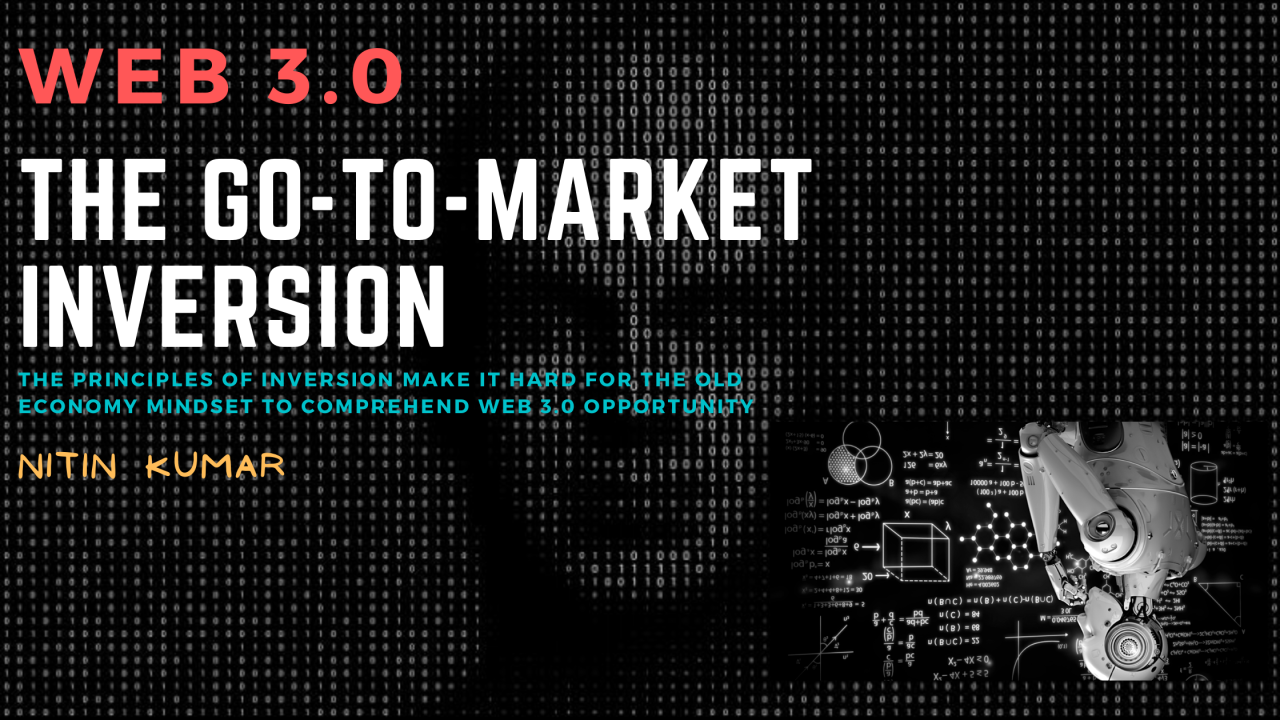 Web 3.0: The Go-to-Market Inversion
Web 3.0: The Go-to-Market Inversion
Tags: Blockchain, Digital Transformation, NFT
Tags: Blockchain, Cryptocurrency, Metaverse
 The Metaverse: The 8 Key Technology Drivers
The Metaverse: The 8 Key Technology Drivers
Tags: Blockchain, Cryptocurrency, Mergers and Acquisitions
 M&A Due Diligence: Spotting the Dark Cloud
M&A Due Diligence: Spotting the Dark Cloud
Tags: Blockchain, Cryptocurrency, Mergers and Acquisitions
 M&A Deal Leakage
M&A Deal Leakage
Tags: Blockchain, Cryptocurrency, Mergers and Acquisitions
 Legal AI: An Automated Versus Autonomous Future
Legal AI: An Automated Versus Autonomous Future
Tags: AI, Autonomous Vehicles
Tags: Blockchain, Cryptocurrency, Mergers and Acquisitions
 Decoding the Uniswap Controversy
Decoding the Uniswap Controversy
Tags: Innovation
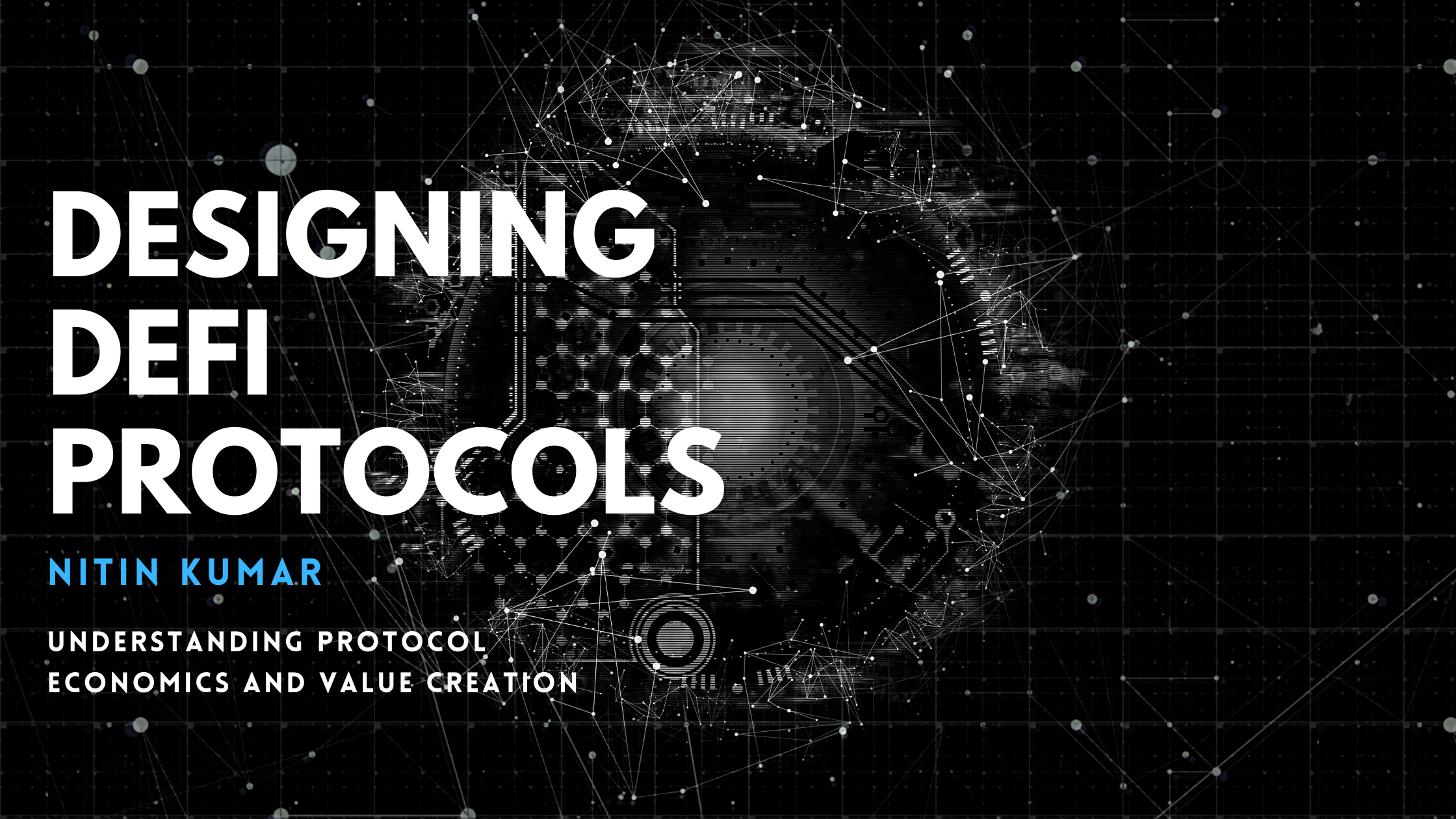 DeFi Protocols: Designing for Value
DeFi Protocols: Designing for Value
Tags: Blockchain, Cryptocurrency, Mergers and Acquisitions
 Common Crypto Manipulation Techniques
Common Crypto Manipulation Techniques
Tags: Cryptocurrency, Innovation, Leadership
 Spotting the 5 Common Crypto Price Manipulation Patterns
Spotting the 5 Common Crypto Price Manipulation Patterns
Tags: Cryptocurrency, Innovation
 Stablecoin Quality Analysis
Stablecoin Quality Analysis
Tags: Blockchain, Cryptocurrency, Mergers and Acquisitions
 Stablecoin Quality Analysis
Stablecoin Quality Analysis
Tags: Cryptocurrency, Digital Disruption, Innovation
Tags: Blockchain, Cryptocurrency, Mergers and Acquisitions
Tags: Blockchain, Cryptocurrency, Mergers and Acquisitions
 The Shitcoin Phenomenon: The New Bane of Crypto
The Shitcoin Phenomenon: The New Bane of Crypto
Tags: Blockchain, Cryptocurrency, Innovation
 Oracle Crypto Assets: A Quick Primer
Oracle Crypto Assets: A Quick Primer
Tags: Blockchain, Cryptocurrency, Innovation
 How Crypto Whales Move Markets
How Crypto Whales Move Markets
Tags: Blockchain, Cryptocurrency, Innovation
 Bitcoin Bull Markets, 5 Key Metrics
Bitcoin Bull Markets, 5 Key Metrics
Tags: Cryptocurrency, Digital Transformation, Leadership
 10 Insights from Cryptocurrency 2.0
10 Insights from Cryptocurrency 2.0
Tags: Blockchain, Cryptocurrency, Innovation
 Tokenomics: Measuring Quality of Crypto Assets
Tokenomics: Measuring Quality of Crypto Assets
Tags: Cryptocurrency, Digital Disruption, Innovation
 Demystifying Cryptocurrencies: Exploring the 5 Distinct Asset Classes
Demystifying Cryptocurrencies: Exploring the 5 Distinct Asset Classes
Tags: Blockchain, Cryptocurrency, Innovation
 A Perspective on Complexity Reduction
A Perspective on Complexity Reduction
Tags: Digital Disruption, Innovation, Leadership
 4 Pillars of Modern M&A Integration
4 Pillars of Modern M&A Integration
Tags: Digital Transformation, Management, Mergers and Acquisitions
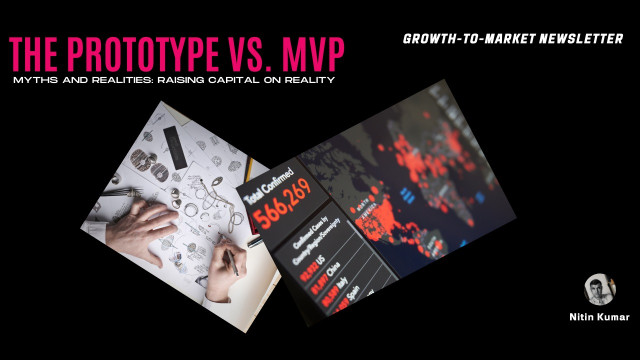 Prototype vs. MVP: Myths and Realities
Prototype vs. MVP: Myths and Realities
Tags: Innovation, Leadership, Mergers and Acquisitions
 Board Member
Board Member
Tags: Big Data, Cybersecurity, Digital Disruption
Tags: Blockchain, Cryptocurrency, Digital Disruption
 Operating Partner
Operating Partner
Tags: Emerging Technology, Leadership, Entrepreneurship
 Appnomic
Appnomic
Tags: AI, Innovation, Business Strategy
 SmartBeings Inc
SmartBeings Inc
Tags: AI, Cloud, IoT
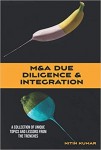 M&A Due Diligence & Integration: A collection of unique topics and lessons from the trenches
M&A Due Diligence & Integration: A collection of unique topics and lessons from the trenches
Tags: Innovation, Management, Mergers and Acquisitions
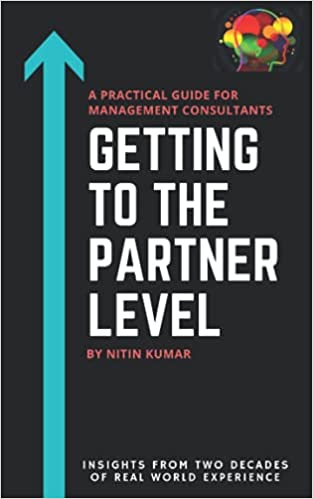 Getting to the Partner Level: A practical guide for Management Consultants
Getting to the Partner Level: A practical guide for Management Consultants
Tags: Management, Leadership, Mergers and Acquisitions
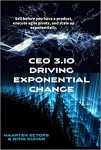 CEO3.io - Driving Exponential Change: Sell before you have a product, execute agile pivots when required and scale up exponentially
CEO3.io - Driving Exponential Change: Sell before you have a product, execute agile pivots when required and scale up exponentially
Tags: Digital Transformation, Digital Disruption, Innovation
 Audiobook: Wargaming for M&A Integration Leaders
Audiobook: Wargaming for M&A Integration Leaders
Tags: Leadership, Business Strategy, Mergers and Acquisitions
 American Business Award for the Book "Getting to the Partner Level"
American Business Award for the Book "Getting to the Partner Level"
Tags: Innovation, Leadership, HR
 The Art of M&A
The Art of M&A
Tags: AI, Business Strategy, Mergers and Acquisitions
 Modern Approach to M&A Integration
Modern Approach to M&A Integration
Tags: Management, Leadership, Mergers and Acquisitions
Tags: Leadership, Business Strategy, Mergers and Acquisitions
Tags: Innovation, Leadership, Sales
Tags: Leadership, Management, Mergers and Acquisitions
 Co-Founder
Co-Founder
Tags: Leadership, Entrepreneurship, Mergers and Acquisitions
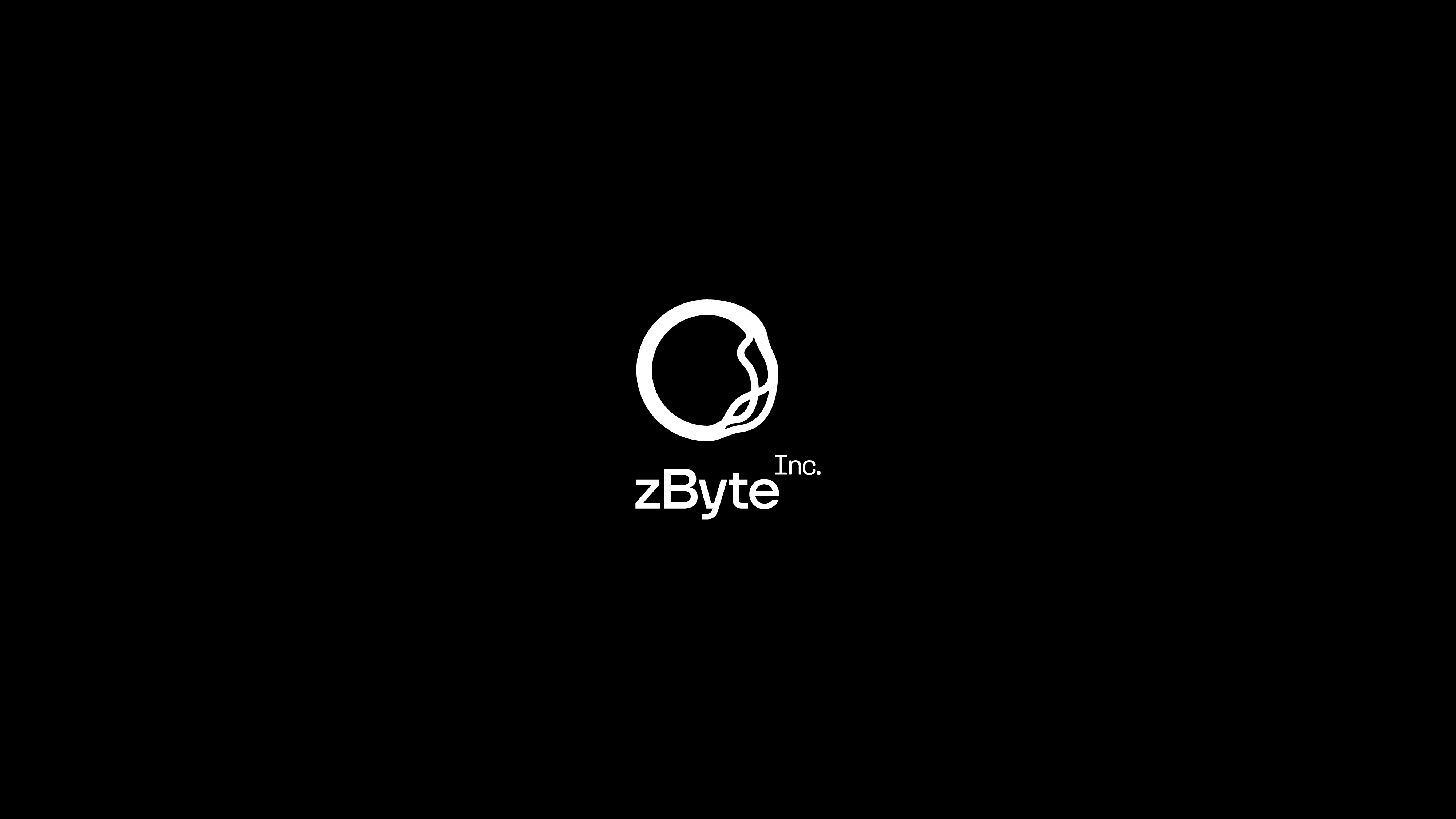 Co-Founder
Co-Founder
Tags: Blockchain, Cryptocurrency, Lean Startup
 Innovator of the Year
Innovator of the Year
Tags: Innovation, Leadership, Business Strategy
 M&A Consultant of the Year
M&A Consultant of the Year
Tags: AI, Innovation, Mergers and Acquisitions
 Consulting Executive of the Year
Consulting Executive of the Year
Tags: Innovation, Leadership, Mergers and Acquisitions
 Top Consultants of 2018
Top Consultants of 2018
Tags: Innovation, Leadership, Mergers and Acquisitions
 40 under 40
40 under 40
Tags: Management, Leadership, Mergers and Acquisitions
 Certified M&A Specialist
Certified M&A Specialist
Tags: Leadership, Business Strategy, Mergers and Acquisitions
 CEO Worldwide
CEO Worldwide
Tags: Management, Leadership, Entrepreneurship
 IMCB International Management Consultants Certification Board
IMCB International Management Consultants Certification Board
Tags: Management, Leadership
Tags: Change Management, Business Strategy, Mergers and Acquisitions
 (ISC)²
(ISC)²
Tags: Cybersecurity, Privacy
 150+ Top Global Cloud Thought Leaders and Next Generation Leaders of 2021
150+ Top Global Cloud Thought Leaders and Next Generation Leaders of 2021
Tags: Cybersecurity, Leadership, Business Strategy
 Top 50 Influencers: Business Strategy
Top 50 Influencers: Business Strategy
Tags: Business Strategy
Tags: Change Management
 Top 10 Influential CEOs
Top 10 Influential CEOs
Tags: Digital Disruption
 Top Thought Leader on M&A
Top Thought Leader on M&A
Tags: Mergers and Acquisitions
 Top 50 Influencers: Customer Loyalty
Top 50 Influencers: Customer Loyalty
Tags: Customer Loyalty
 Top 5 Influencers: Autonomous Drivig
Top 5 Influencers: Autonomous Drivig
Tags: Digital Disruption, Emerging Technology, Autonomous Vehicles
Tags: Digital Disruption, Emerging Technology, Innovation
 Top 50 Influencers: Cloud
Top 50 Influencers: Cloud
Tags: Cloud, Digital Transformation, Data Center
 Top 50 Influencers: Change Management
Top 50 Influencers: Change Management
Tags: Management, Leadership, Change Management
 Top 5 Influencers: Strategy
Top 5 Influencers: Strategy
Tags: Management, Leadership, Business Strategy
 Top 10 Influencers: Autonomous Driving
Top 10 Influencers: Autonomous Driving
Tags: Autonomous Vehicles
 Top 50 Influencers: VR
Top 50 Influencers: VR
Tags: AR/VR, Digital Disruption, Emerging Technology
 Value of Data in Autonomous Driving: A Fireside Chat with Nitin Kumar, CEO
Value of Data in Autonomous Driving: A Fireside Chat with Nitin Kumar, CEO
Tags: Autonomous Vehicles, Big Data, Digital Disruption
 The 6th Annual Internet of Things Global Summit
The 6th Annual Internet of Things Global Summit
Tags: AI, Innovation, IoT
Tags: Digital Transformation, Innovation, Sales
Tags: Innovation, Leadership, Mergers and Acquisitions
 US district judge strikes down Trump’s new H-1B visa rules
US district judge strikes down Trump’s new H-1B visa rules
Tags: Management, Legal and IP, Public Relations
 AI trend and predictons
AI trend and predictons
Tags: AI, Digital Disruption, Emerging Technology
 Self Healing Pioneers
Self Healing Pioneers
Tags: AI, Digital Disruption, Data Center
 Appnomic eyes Investment
Appnomic eyes Investment
Tags: AI, Digital Disruption, Management
 Hotels to cut Outsourcing
Hotels to cut Outsourcing
Tags: Digital Transformation, Digital Disruption, Business Strategy
 Rethinking Smart Manufacturing
Rethinking Smart Manufacturing
Tags: Digital Disruption, Emerging Technology, Culture
 Heal Thyself: Self Healing Enterprise
Heal Thyself: Self Healing Enterprise
Tags: Cloud, Digital Disruption, Emerging Technology
 Donald Trump Exec Order on H1B
Donald Trump Exec Order on H1B
Tags: Management, Leadership, Public Relations
 Rethinking Smart Manufacturing for the New Normal
Rethinking Smart Manufacturing for the New Normal
Tags: Digital Disruption, Innovation, IoT

Tags: Innovation, Management, Entrepreneurship
 Appnomic: A Pioneer In Creating Self-Healing Software For IT Operations
Appnomic: A Pioneer In Creating Self-Healing Software For IT Operations
Tags: AI, Emerging Technology, IT Operations

Tags: Digital Transformation, Digital Disruption, Business Strategy

Tags: AI, Digital Disruption, Emerging Technology
 Digital Literacy Training Can Align Emerging Technologies
Digital Literacy Training Can Align Emerging Technologies
Tags: Digital Disruption, Innovation, IoT

Tags: AI, Digital Disruption, Innovation
 Why Industrial Automation Security Should Be a Renewed Focus
Why Industrial Automation Security Should Be a Renewed Focus
Tags: IoT, COVID19, Security
 Don’t Forget Security-by-Design Principles in Times of Trouble
Don’t Forget Security-by-Design Principles in Times of Trouble
Tags: Cybersecurity, Emerging Technology, IoT
 US Revisits Immigration Guidelines: COVID-19
US Revisits Immigration Guidelines: COVID-19
Tags: Digital Disruption, Emerging Technology, Diversity and Inclusion, COVID19
 Post Covid-19, IT-BPO players see new business opportunities
Post Covid-19, IT-BPO players see new business opportunities
Tags: Digital Disruption, Innovation, Management, COVID19
 Covid-19: IT companies brace for disruption of service delivery model
Covid-19: IT companies brace for disruption of service delivery model
Tags: Digital Disruption, Innovation, Management, COVID19
Tags: AI, Digital Disruption, Emerging Technology
Tags: Leadership, Management, Mergers and Acquisitions

Tags: Social, Management, Leadership
 Divestitures: A Strategic Perspective
Divestitures: A Strategic Perspective
Tags: Management, Leadership, Mergers and Acquisitions

Tags: Digital Disruption, Management, Mergers and Acquisitions
Tags: Innovation, Management, Mergers and Acquisitions

Tags: Management, Leadership, Culture

Tags: Digital Disruption, Startups, Business Strategy

Tags: Innovation, Business Strategy, Mergers and Acquisitions
 Divestitures: Transition Services Agreements
Divestitures: Transition Services Agreements
Tags: Management, Leadership, Mergers and Acquisitions
 IoT Venture Investing and Global Trends
IoT Venture Investing and Global Trends
Tags: Digital Disruption, Emerging Technology, IoT

Tags: Digital Transformation, Digital Disruption, Innovation

Tags: Risk Management, Business Strategy, Mergers and Acquisitions

Tags: Digital Disruption, Management, Change Management
Tags: Business Strategy, Management, Mergers and Acquisitions
Tags: Innovation, Management, Mergers and Acquisitions
Tags: Change Management, Business Strategy, Mergers and Acquisitions
Tags: Digital Disruption, Business Strategy, Mergers and Acquisitions
 Product Value Leakage: The Services Mindset
Product Value Leakage: The Services Mindset
Tags: Digital Transformation, Entrepreneurship, Startups
 Anatomy of Go-to-Market Motions
Anatomy of Go-to-Market Motions
Tags: Startups, Leadership, Sales
 Product Management: Art and Science of Hiring
Product Management: Art and Science of Hiring
Tags: Innovation, Leadership, Management
 Turnaround of Failed M&A Integration Efforts
Turnaround of Failed M&A Integration Efforts
Tags: Management, Leadership, Mergers and Acquisitions
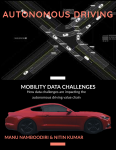 Autonomous Driving: Mobility Data Challenges
Autonomous Driving: Mobility Data Challenges
Tags: Autonomous Vehicles, Digital Disruption, Emerging Technology
 Hostile Takeovers: The Anatomy
Hostile Takeovers: The Anatomy
Tags: Leadership, Mergers and Acquisitions, Public Relations
 Understand Client Personalities
Understand Client Personalities
Tags: Management, Leadership, Sales
 Autonomous Driving: The Big Data Value Myth
Autonomous Driving: The Big Data Value Myth
Tags: Digital Disruption, Emerging Technology, Autonomous Vehicles
 Hurting the Network- Part 3
Hurting the Network- Part 3
Tags: Leadership, Management, Sales
 Autonomous Driving: Technology Stack Implications
Autonomous Driving: Technology Stack Implications
Tags: Autonomous Vehicles, Digital Disruption, Emerging Technology
 The Stack Attack
The Stack Attack
Tags: Digital Disruption, Innovation, Business Strategy
 Hurting the Network- Part 2
Hurting the Network- Part 2
Tags: Social, Management, Leadership
 Edge Computing: Drivers and Trends
Edge Computing: Drivers and Trends
Tags: Cloud, Emerging Technology, Autonomous Vehicles
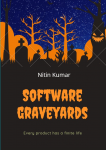 Anatomy of Software Graveyards
Anatomy of Software Graveyards
Tags: Business Strategy, Digital Disruption, Management
 Effective Selling: Understand Customer Personalities
Effective Selling: Understand Customer Personalities
Tags: Management, Entrepreneurship, Sales
 Hostile Takeovers: The Dark Side of M&A
Hostile Takeovers: The Dark Side of M&A
Tags: Innovation, Leadership, Mergers and Acquisitions
 Modern Day Sales for Management Consultants
Modern Day Sales for Management Consultants
Tags: Leadership, Business Strategy, Mergers and Acquisitions
Tags: Management, Business Strategy, Mergers and Acquisitions
 Wargaming for Chief Information Security Officers
Wargaming for Chief Information Security Officers
Tags: HR, Risk Management, Legal and IP
Tags: Management, Leadership, Sales, Mergers and Acquisitions
Tags: Innovation, IoT, Mergers and Acquisitions
Tags: Digital Disruption, Digital Transformation, Innovation
Tags: Digital Disruption, Digital Transformation, IoT
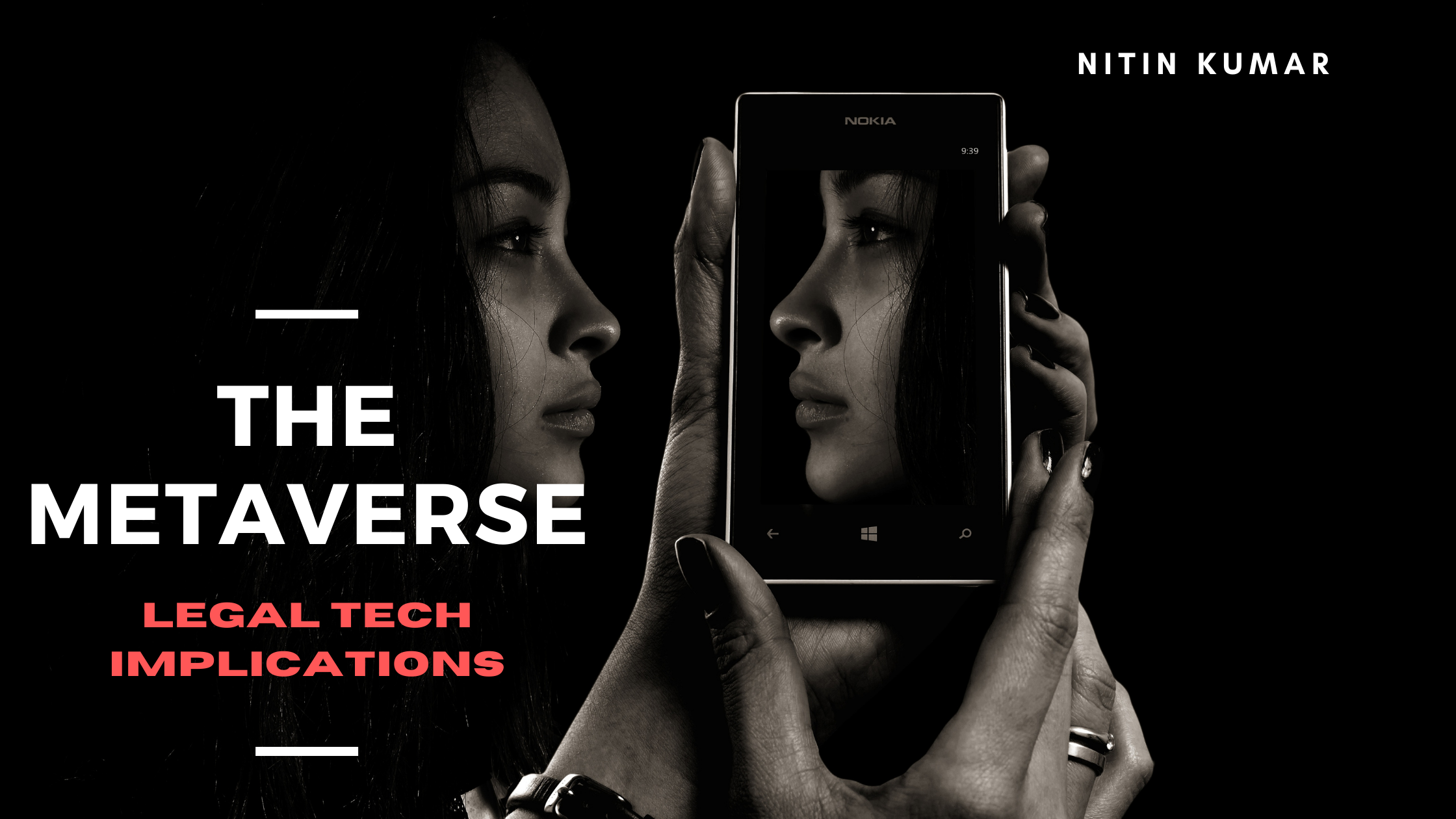 Metaverse: The Legal Tech Impact
Metaverse: The Legal Tech Impact
Ever since Facebook announced its rebranding as Meta and the pivot into being a Metaverse company, it has created a lot of buzz and hype. The announcement also woke up several Metaverse initiatives, projects, and companies off the radar. The Metaverse is considered an amalgamation of digital realms where people can interact, socialize, communicate, collaborate, and even conduct commerce. This concept itself is not new and prior Metaverse incarnations like Second Life have been around for a decade or more.
Given VR (Virtual Reality) has proved multiple standalone experiences that gathered momentum over the past few years, these experiences would now be woven together to produce a more coherent Metaverse, where digital and physical objects and beings will interact seamlessly.
The Metaverse is gearing up to become the fourth-generation compute platform i.e., the first generation of applications ran on the PC, second generation on the world wide web, and the third generation on mobile phones. Spatial computing, as it is called, is growing in its promise and it is a matter of time until it will deliver value at scale for the practice of law.
The three-pronged adoption curve with quick-hit use cases driven by consumers, corporates, and other organizations creates opportunities for law firms and legal service providers. Now, the low-hanging use cases for everyone is considered marketing, however, a lot more opportunities are on the anvil. Let us examine some specific legal use cases, nuances, and barriers to adoption in this article.
Many high-profile, international cases could hold public trials in the Metaverse and even in the jurisdiction of where the crime occurred. Jurors and witnesses with VR headsets could be participating in the trials, and meetings with clients could be more engaging and immersive. Courts could be replaced with digital spaces eliminating the constraints of physical space, processing multiple cases in parallel with people’s ability to go in and out of spaces at will.
VR enabled Metaverse imparts the immersive ability for legal professionals to move past whiteboards and sticky notes, and experience direct immersion into an accident, crime scene, or recreated scenarios that mirror real life. During deposition, legal professionals, experts, witnesses, jurors, etc. could be in the same room as the testimony wearing VR headsets.
Metaverse training can enable witnesses, jurors, lawyers, and even judges to walk a crime scene to understand context, intricacies, possibilities, and train themselves quickly on complex cases. Through the utilization of a metaverse, a shared digital experience, individuals could ‘live’ the experiences discussed in a court proceeding instead of just hearing about them. This could lead to a potentially deeper understanding of a case and change how our legal system operates.
Through the use of a metaverse, the legal education system could open their classrooms up globally and students would not be restricted by geographic constraints. The curriculum could also be adapted to be highly immersive, with students experiencing cases unfold firsthand, rather than just reading about them in a textbook. Also, students could experience VR simulations of trials, court cases, and courtrooms, enabling them to gain valuable hands-on experience that may otherwise be difficult to obtain.
Although critical rules and laws regarding evidence need to evolve so modern technologies can be accommodated, the possibilities are real. Judges and juries can go through details of the evidence directly experienced during a crime scene, creating better empathy and fairness in the system. Depositions can become more effective where scheduling, location, and time zones become a critical path. Metaverse-enabled ecosystems will reduce costs related to space, interviews, depositions, discovery, etc. making the economics easier for clients and attorneys.
The Metaverse can also produce unpleasant environments instead of soothing experiences. Many of these environments can be designed for sentences or punishments as an outcome of the trial. These virtual environments can provide milder sentences or corrective measures for juvenile delinquents or others.
A metaverse can be effectively leveraged without being in one location, as it is not subject to geographic constraints. This use case is suitable for global or multi-location teams on time-sensitive matters, cases requiring detailing, standardized procedures e.g., M&A, contract negotiations, etc. Clients can also be dispersed globally and effectively collaborate with law professionals via an immersive experience.
The legal services economy i.e., law firms and service providers can use VR for marketing via promotions and advertising. There are a few different avenues for this ranging from affiliate advertising, VR client experience, case simulations, thought leadership, etc. Over the next 12-18 months, it is probable that everyone with a website on the internet will scramble for a Metaverse presence, as the rush has commenced with daily news articles around large enterprises establishing their footprint.
Although many of these use cases appear cool, the big barriers will need to be addressed legally, commercially, and operationally to remove barriers of adoption. There are limited to no VR workspaces dedicated to running legal operations in corporations or law firms we know. The legal industry is traditional and where change is voraciously resisted and justified in the name of legal risk itself, it has historically been challenging to introduce radical shifts into the legal industry. There are multiple barriers to adoption which will need to be addressed. Let us examine prominent issues below:
Leveraging VR technology is not easily accessible financially or operationally for everyone. If one plaintiff or defendant cannot financially afford this technology, then one party could be a victim of technical asymmetry putting them at a disadvantage.
VR forensics is new, emerging, and fast-paced, and when scaled to multiple and interwoven experiences such as the Metaverse, it becomes extraordinarily complex. The maturity of this domain is nascent and lacks enough domain specialists, making widespread adoption harder.
The time, effort, and resources deployed to make the Metaverse acceptable in the courtroom can be non-trivial. VR is a radical departure from traditional e-discovery and procedures will need to be amended to allow the use of rendered evidence. Many legal professionals will be averse to embarking on this arduous task.
The cost of deploying metaverse infrastructure is high and requires considerable investment. The infrastructure includes servers, 360-degree cameras, hardware, software, trained personnel, etc., and many public courts and law practices are unlikely to see viable returns or advantages from these investments. Technology in VR is fast-maturing and will see short upgrade cycles adding to these costs in the near term. It will take time to provide the required computing power at the edge (not the cloud).
The Metaverse generates highly immersive technologies which can pressure the physical attributes and conditions of people. People have felt motion sickness, disorientation, and risk artificial sensory overload. People with mental ailments like anxiety and autism also could be challenged with the technology and due considerations must be accounted for before assuming the use of Metaverse becomes universal.
Accessing VR via mobiles or headsets can compromise privacy ranging from location to retinal access. The ambiguity around privacy laws in the Metaverse will hinder adoption. Bodysuits provide opportunities to create more data about the user e.g., body language, emotions, health, behavior, reactions, etc. There could also be surveillance bots deployed to identify individuals via faces, fingerprints, retina, gestures, walk, or even their Metaverse footprints.
As promising as a shared virtual reality may sound and as real as the barriers are, one needs to remember there will also be a need for laws pertaining to Metaverse crimes which must be established. Although still in its preliminary stages, the Metaverse is already a fertile ground for a range of crimes from extortion, money laundering, terrorism, prostitution, stalking, child abuse, identity theft, etc. Traditional law is yet to come to terms with all this even if the harm and implications caused by virtual worlds are understood to a fair degree. Lawyers, psychologists, etc. are looking intricately at the boundaries between actual crime and virtual crime depending on the damage caused. Many questions are yet to be answered e.g., a sexual assault on another person in a virtual world may cause mental trauma rather than it being a physical violation, and hence how should it be treated?
The rules of conduct also get reconfigured in metaverse environments by attaining superpowers e.g., flying, invisibility, shapeshifting, etc., and could add new dimensions to the set of crimes possible in the realms of physical reality. Even if the risk of being murdered, raped, or being physically assaulted in the Metaverse is low, the lack of actual consequences could encourage people to engage in such acts causing psychological trauma to the victims.
Given the immaturity of the Metaverse, any legislative attempt to regulate it will be error-prone and may also cripple the innovative evolution of technology. Metaverse companies should self-regulate themselves, the environments, and the interaction models by adhering to ethical and legal principles to the extent possible. Governments and legislative bodies can proactively extend local privacy laws to contain the information collected in various Metaverses. Liability definitions must be clarified, and early blueprints of Metaverse laws must be developed quickly. In this decade, disruptive technologies will scale rapidly and exponentially, hence we may not have several years to address the risks and harness the opportunities.
The Metaverse is here is to stay, scale and grow. Industries like Media, Healthcare, Military, etc. have all embraced VR to enhance their customer insights and experiences from planning surgeries, training, mission simulations or helping first responders with risk reduction. The use cases outlined above so promise that it is a matter of time before barriers are removed driving endless possibilities through the adoption of Metaverse in the Legal industry. As the modern technologies power the new future filled with metaverses, artificial intelligence, autonomous operations, etc., the traditional legal industry must establish laws governing these new virtual worlds which intersect with the existing physical world.
Nitin Kumar is a two-decade veteran in the Hi-Tech industry. His career has spanned many intrapreneurial and entrepreneurial roles in executive positions across Software, Services, and Management Consulting. His passion is propelling organizations to greater levels of success through strong relationships and differentiated products. He is considered a business builder, thought leader, and pioneer of many innovative approaches. During his operating and consulting roles, he has grown, transformed, and pivoted many software businesses and scaled businesses successfully. Nitin is the CEO of Ligl, a pioneer in digital discovery orchestration and is an author of many articles, and is often seen speaking at conferences on AI, IoT, SaaS, and Blockchain. He is a veteran CEO and has added value to 1,000 plus M&A transactions in his career.
The Metaverse and its impact on the legal industry (thegreatblawg.co.uk)
The Metaverse: Hype vs Reality. Introduction | by Nitin Kumar | Jan 2022 | DataDrivenInvestor
https://abovethelaw.com/2021/12/is-this-the-first-law-firm-in-the-metaverse/
The Metaverse: The 8 Key Technology Drivers | by Nitin Kumar | Jan 2022 | DataDrivenInvestor
Tags: Innovation, Legal and IP, Metaverse
 AI Enabled e-discovery: Expectations vs Reality
AI Enabled e-discovery: Expectations vs Reality
As we rewrite the rules of business in this decade, artificial intelligence (AI) assumes the limelight. Legal professionals believe that a lot of promise offered by AI in law is unproven with several use cases unable to deliver. However, one area easier to embrace, adapt, and prove is digital discovery (erstwhile called e-discovery). It involves AI, other analytics, automation of workflows to handle new sources of data, expanding volumes, and additional capacity for legal professionals.
Given the volumes of data, both structured and unstructured that lawyers must otherwise manually analyze, AI can have a drastic impact on the actions, outcomes, costs, and efficiency of each case. According to American Bar Association, 62% of lawyers already use some variant of traditional e-discovery solution and this level of adoption is easier to AI-enable and automate unlike other legal use cases of AI.
AI can reduce the burden on legal professionals by identifying patterns, relevant phrases, sentences prone to omission when traditional methods. There are many low hanging opportunities with AI and e-discovery, let us discuss a few below:
AI helps sift through high volumes of data to identify key documents and associated information adding speed and efficiency to legal teams. It can also benchmark whether a claim is legit, strong, or worthy. If terabytes of data can be analyzed to chart the strength of the case to focus on what matters, it is worth its weight in gold.
Managing an e-discovery case is complex, there are numerous documents and facts with a lot of details e.g., contract scope, date of the breach, ramifications of violation, etc. Using clustering techniques, AI can group patterns of terms that appear together while creating multiple angles on each case issue. Unstructured data being clustered into logical packages for analysis simplifies the data and imparts speed that humans cannot achieve.
The most cumbersome and expensive part of e-discovery is the review stage. AI can expedite classification, tagging, relevance, etc. AI also learns from human actions for additional keywords or facts of interest and this additional data can train review models for higher ranges of accuracy which limits the time humans have to spend on these mundane tasks.
The discovery process is intense and deep, people can lose sight of their depth of analysis and go past the point of diminishing returns. These efforts add costs are rarely quantified, compared, or improved. KPIs correlation activities, costs, and financials are seldom analyzed for productivity, efficiency, or returns. AI can compile this information in real-time and roll it up into a visual layer eliminating recurring problems and enhance the cost efficiency of the entire function.
Data redaction is one of the key concerns e.g., PII, consent, etc. Withholding data and privileged, anonymous, redacted, etc. is time-consuming and AI alleviates this issue. Shielding data from disclosure with high accuracy and greater levels of compliance is another important use case for AI in digital discovery.
There are several risks and opportunities with using AI in digital discovery, we can however categorize them into two broad themes with opacity being a perceived risk and cost being the opportunity.
AI enables substantial savings on the e-discovery spend by cutting human effort, avoiding rework, reducing errors, and imparting speed. Smaller and less complex cases can be optimized by automating research, reviews, redaction, etc. AI can also bring forth effort and spend patterns through real-time analytics enabling focus and operational decisions.
When data is limited, expensive to collect, or in unknown formats, it becomes prohibitive, and hence, traditional rule-based, automation workflows could prove better than AI. On top of this, cost, access, and limitations of data can affect accuracy. It takes massive amounts of data to train AI models. These constraints push legal departments back to legacy methods.
Finally, the opacity within algorithms creates a lack of explainability. Clarity by explainability is one of the most important factors in decision-making and a major area of discomfort for lawyers.
AI use cases are rapidly evolving and changing the way the e-discovery process is designed, operationalized, and delivered. The future brings multiple shifts to this space.
Today, AI is layered on top of existing discovery processes i.e., it is not native to it. The integrations into ESI (Electronically Stored Systems) must be deeper. The extraction of information, categorization of data, clustering, and contextualization by case will be seamless in the future. Deep learning algorithms will simulate human thinking and the e-discovery software (not the AI module) will learn to learn driving exponential value.
AI must be leveraged more upstream in the EDRM process, deeper integrations will enhance visibility into data sources before collection. In the future, AI will deploy sophisticated data mining algorithms to widen scope outside of ESI and correlate them with context, custodians, and anomalies. These algorithms will inform AI-based recommendation engines to identify additional custodians to be involved or placed on legal hold without compromising defensibility. Pushing AI more upstream will create significant downstream efficiencies by reducing data volumes sent out for review. Integrating AI upstream will also allow legal teams to set case strategies and tactics as legal teams transition from insight to foresight.
AI will evolve from its tactical roles today i.e., collector, curator, advisor, etc. to an orchestrator. AI will strengthen its role as an advisor through recommendation engines proposing additional documents, custodians, etc. In the future, AI will be an orchestrator learning from past actions, correlating actions and decisions across multiple channels. For example, if the relevance rate of document review was X% then AI will help fine-tune the collection parameters, this learning can be leveraged to target the collection and map them to the right reviewers. AI, as an orchestrator will also help automate tasks, predict case, and sentence outcomes based on its own learning.
AI creates a range of opportunities for legal professionals to drive value in digital discovery. E-discovery is more suitable with acceptance higher than other areas of Legal Tech for using AI as it eliminates mundane human tasks like targeted collection, early data assessment, relevance, issue categorization, and quality control while preserving human bandwidth in areas of higher value.
Nitin Kumar is a two-decade veteran in the Hi-Tech industry. His career has spanned many intrapreneurial and entrepreneurial roles in executive positions across Software, Services, and Management Consulting. His passion is propelling organizations to greater levels of success through strong relationships and differentiated products. He is considered a business builder, thought leader, and pioneer of many innovative approaches. During his operating and consulting roles, he has grown, transformed, and pivoted many software businesses and scaled businesses successfully. Nitin is currently the CEO of Ligl, a pioneer in digital discovery orchestration and is an author of many articles, and is often seen speaking at conferences on AI, IoT, SaaS, and Blockchain. He is a veteran CEO and has added value to 1,000 plus M&A transactions in his career.
Tags: AI, Digital Disruption, Legal and IP
 Voice Tech: Ways to Play
Voice Tech: Ways to Play
Introduction
With any new technology, adoption and usage make the journey from emerging to being mainstream and voice is clearly crossing that chasm. Apple, Google, Baidu have reported hundreds of millions of devices using voice, and Amazon has 200 million users. Adoption is typically uneven, but the penetration levels of smartphones accelerate that journey when it comes to Voice Tech.
Altering Business Paradigms
Voice is literally changing how business works and customers think about products. Especially given we are in the middle of a global pandemic, the contact-less use cases have suddenly scaled by replacing touch intensive graphical user interfaces or buttons. With platform players like Siri, Alexa, Cortana, and Bixby creating broader use cases, the enterprise players like Nuance, Houndify etc. create niche opportunities with white labelled solutions.
Boost Customer Interactions
One of the goals of voice technologies is to develop deeper personal relationships with the users and customers. The level of personalization possible with voice is much higher than the graphical user interface or the chatbot era. The sheer variety of systems, context and behaviors are the biggest challenge to automation or unified customer experience, voice can play a huge role in integration the technology ecosystem of hardware, software, and service together.
AI Enabled Automation
The convergence of Voice Tech and Artificial Intelligence create a myriad of opportunities as Voice Tech benefits from machine learning. AI is going to be embedded deep into the context enabling voice interfaces to easily leverage the scale. For examples, voice assistants can teach themselves how to solve problems better and quicker with your customers.
Sonic Marketing
Voice Tech is well on its path to be front and center of search engine optimization. It has started to migrate organizational thinking from text-based to voice-based SEO. As voice-based searches continue to increase, sonic marketing strategies must weave themselves around voice. Sonic marketing is more than search, it also spans voice content e.g., podcasts and sonic branding i.e., using audio to reinforce brand recognition. Voice-enabled ads provide advertisers with real-time measurement capabilities, enhancing the appeal of sonic marketing. Lack of in-house skills and knowledge make it a bit hard for early adoption of voice-based marketing strategies, but there is wide acknowledgement of the large opportunity it presents.
Voice Enabled Products
Voice has morphed from being a small feature on a smartphone to being able to control large ecosystem of products and services. They can eliminate the issue of multiple apps on multiple devices and siloed operation of ecosystems. Customers expect products to have native integration with their platforms of choice. All new generation products will have to be voice enabled for them to stay relevant and competitive.
The COVID-19 Catalyst
Coronavirus has provided an ideal catalyst to voice adoption. Given concerns on the spread, everyone from retail stores, to banks and hotels etc. have either created or planning contactless products, services etc. Voice technologies provide the perfect alternative to touching buttons or screens to interact and transact.
Business Models
Voice Tech is the unifying glue between a single ecosystem or multiple ecosystems enabling efficient distribution and monetization. Voice is also a way to quickly weave service economics around hardware or software. Voice can create voice enabled hardware infrastructure to drive larger adoption, create software modules to help developer communities to voice-enable applications or enhance existing services to provide better integration with products in the ecosystem.
Platform Based
Platform plays have been around for a while, it is about creating of a seamless interaction on a two-side marketplace and monetize transactions. Ability to gain critical mass on each side of the platform and engineer interoperability, interconnections through meaningful curation is the key. The hardware market is very disparate e.g., bulbs, plugs, home appliances etc. Voice assistants can make the integration seamless; the business model eliminates the need of many separate mobile applications into one voice interface. The key is to get as many hardware vendors to adopt the platform while driving adoption by the users leveraging platform business model. Monetization can be attained through the hardware vendor or the user, for now most cases are the former paying for services while user paying for voice enabled hardware like Alexa or Google Assistant.
Voice First Business Models
As voice adoption scales with voice only applications or voice enabled hardware, platforms will amplify reach, monetization, and scale by enabling third party solutions like marketing, analytics, security, automation etc. Almost all the Big-Tech players have embarked on creating such ecosystems to scale. KPIs to measure these ecosystems have been around # of skills e.g., Alexa, usage of skills, transactions enabled by ecosystems, # of ecosystems enabled e.g., smart home, smart car etc.
Transaction Based Business Model
The transaction-based business models have been popular for a while, we can see voice-based transactions scaling across value chains such as payments, advertising, marketing, food delivery etc. The basic economic value underpinning the business model is a piece of the transaction fee, this can get to significant levels of scale as ecosystems grow their reach. The transaction-based business model can scale across hardware, software and services creating new experiences across complete value chains for companies and consumers alike.
Voice-Data Interchange Model
The voice and data interchange are a great way to monetize Voice Tech. The difference between voice and data being most data generated by sensors today are monetized by sensor creator, but voice is monetized by parties other than the creators. In future, I see the advent of voice brokers aggregating queries from multiple sources and monetizing them as packaged intelligence. For examples, voice archives can become an archived investment to corelate with data patterns as augmented intelligence for better targeting etc. There is also a market for real time voice commentary, such as weather, disaster, traffic jam information etc. One of the emerging business models is micro- monetization of voice e.g., AaaS or “Answers as a Service”
Conclusion
Voice is a fast-growing interface enabling better experiences through automation, integration and weaving service economics around hardware and software ecosystems. Voice Tech is at the crossroads between multiple context, intelligence and experience continuums and will continue to scale and evolve. There do exist a few barriers and challenges to overcome such as voice privacy when it is aggregated by cloud players, lack of fully baked data sets in the right volumes to train models in the enterprise, voice security still being immature and limited open source communities etc.
Tags: AI, Emerging Technology, Mobility
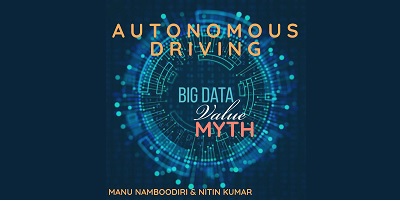 Autonomous Driving: The Big Data Value Myth
Autonomous Driving: The Big Data Value Myth
Tags: Digital Disruption, Emerging Technology, Autonomous Vehicles
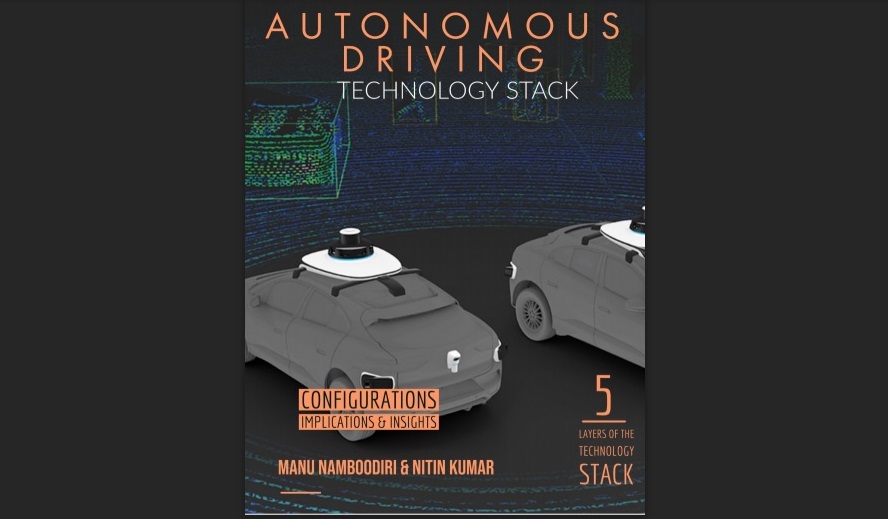 Autonomous Driving Technology Stack: Configurations, Implications & Insights
Autonomous Driving Technology Stack: Configurations, Implications & Insights
Tags: Digital Disruption, Emerging Technology, Autonomous Vehicles
 Migrating from Traditional Monitoring and APM to Self-Healing: A case for EBITDA improvement
Migrating from Traditional Monitoring and APM to Self-Healing: A case for EBITDA improvement
Tags: AI, Cloud, Data Center
 Self Healing Enterprise
Self Healing Enterprise
Tags: AI, Digital Disruption, Digital Transformation
Location: NY, Bay Area, London, Virtual Date Available: April 01st, 2021 Fees: TBD
Submission Date: June 03rd, 2020 Service Type: Service Offered
 Prototype vs. MVP: Myths and Realities
Prototype vs. MVP: Myths and Realities